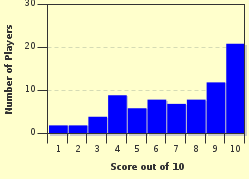Quiz Answer Key and Fun Facts
1. 'Old Number seven' (R-7) has become the basis of a family of space launchers known by various names based on the payload being launched. Which of these Russian launchers is NOT based on 'Old Number Seven'?
2. The R-7 was originally designed as an Intercontinental Ballistic Missile (ICBM) to deliver the Soviet Union's early nuclear warheads.
3. Which of these statements best describes the layout of the R-7?
4. The engines of the R-7 have what unique design feature to overcome the problem of combustion instability?
5. What method is used to steer the R-7 as it ascends on its trajectory into orbit?
6. How are R-7 based launchers assembled?
7. Which of these fuel and oxidiser combinations is use by the R-7?
8. The 'Old number seven' family of launchers have launched more spacecraft than any other system. Which of these types of spacecraft have they launched?
9. Which one of these manned spacecraft was NOT launched by an 'Old number seven'?
10. The launch pad from which the first Sputnik was launched has remained in use ever since.
Source: Author
mstanaway
This quiz was reviewed by FunTrivia editor
bloomsby before going online.
Any errors found in FunTrivia content are routinely corrected through our feedback system.

